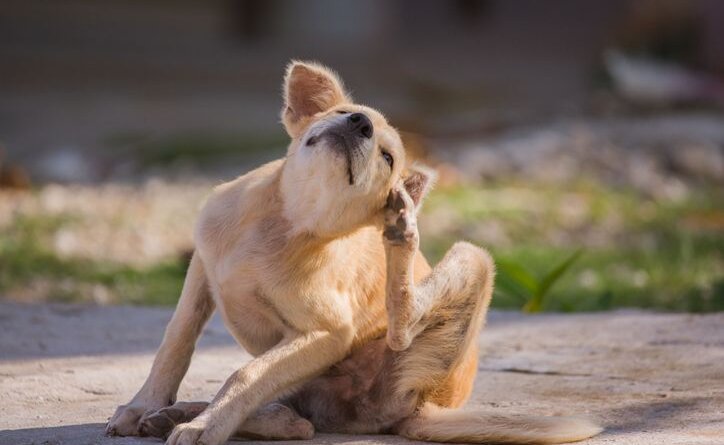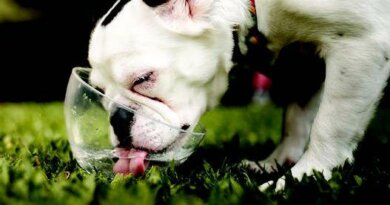Eliminate Fleas Without Poisons – Whole Dog Journal
Start With the Dog
In order to control a flea infestation with IPM techniques, it is necessary to treat not only your dog, but also the indoor and outdoor environments surrounding your dog. In discussing all of these, we’ll start at the center: The dog.
- Improve the dog’s health. “The most important measure you can take for flea control is similar to that with any illness, and that is to strengthen the overall health of the animal,” states Don Hamilton, DVM, author of Homeopathic Care for Cats and Dogs: Small Doses for Small Animals. “In general, given the same environment, healthier animals suffer less from fleas. It all comes back to good food, lots of love, and minimal stress.” Dr. Hamilton prescribes a human grade food, preferably a raw meat diet for dogs, along with supplements, a clean indoor air environment, and no vaccinations. Carolann Mancuso, one of Dr. Hamilton’s clients living near Tampa, Florida, has used this protocol for keeping her dog family healthy and flea-free for over a decade. A healthy dog is less likely to be the target for fleas. Fleas seem to know which dogs are ill in a household. If you are not already feeding a raw meat, homemade diet or human-grade food, this is the time to shift gears. A healthy immune system will make your dog less tasty to a flea. Consult a holistic veterinarian to help boost the health of your dog’s immune system. Some complementary therapies that are useful include acupuncture, Chinese herbs, homeopathy, and nutritional therapy.
- Use supplements. There are numerous dietary additives reputed to be helpful in repelling fleas. Unfortunately, their effectiveness varies from dog to dog. Some people have found the following remedies to be effective for their dogs. If, after giving your dog any of these supplements for a month, you see no improvement in the flea population, consult your holistic veterinarian for further direction. Garlic: One clove per day of crushed organic garlic for a large dog, half for a medium-sized dog, and a quarter for a small dog. Or, use a capsule of cold-pressed garlic oil; adjust the canine dosage from the human dosage on the label (assuming a 150 pound human dose). Vitamin B complex (with vitamin B1): Use a plant-source vitamin B complex, and again, adjust the dose for your dog’s weight. Some people simply add brewers yeast to the dog’s diet for its vitamin B1. Note: Some dogs are allergic to brewers yeast.
- Some people have success with natural topical preparations. Again, the results vary widely. What works well for some dogs may not work at all for others. Desist if these suggestions do not work within three to four weeks. Essential oils of cedar, tea tree, citronella, lavender, eucalyptus, and pennyroyal (the last two are toxic to cats): Mix 10 drops of certified organic essential oil to one tablespoon of olive oil. Spray on your dog as a repellent. A lemon rinse: Steep a cut-up lemon or two in a quart of boiling water and allow to cool. Use liquid as a rinse or sponge onto the coat. Remember that topical preparations – whether safe, natural remedies or poisonous chemicals – target only 1 percent of the flea population, the adults. While repelling adult fleas will help a flea-allergic dog, it should never be your only focus.
- Combing the dog daily with a flea comb will help you determine the effectiveness of your efforts. Comb around the dog’s tail, stomach, and face, where they tend to collect in greater quantities. Look for fleas, as well as flea eggs (tiny white specks) and flea feces (slightly larger black specks). Drop anything you find into a glass of water; it will drown the eggs and fleas. Flea feces is comprised largely of your dog’s blood, and will turn the water reddish brown, confirming the presence of fleas even if no adults are found.
- During the height of infestation, bathe your dog weekly with a noninsecticidal soap; reduce this frequency as the flea problem diminishes, because over-frequent bathing can dry out the skin. Rinsing the dog completely to remove all soap will help prevent drying the dog’s skin, as will increasing the essential fatty acids in the dog’s diet. For dogs who are being bathed frequently, using a nonscented hypoallergenic shampoo, such as Logona Free Shampoo and Shower Gel, will be less irritating to their skin.
- Keep your dog confined to areas of the house that are easy to manage when a flea problem exists (close off basements or extra bedrooms).
For more information and advice on safe and effective ways to prevent and treat fleas and flea bites, purchase and download the ebook, Keeping Your Dog Flea Free from Whole Dog Journal.





